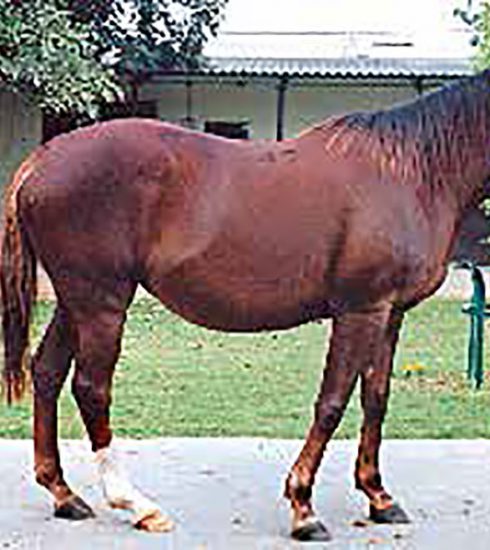THE LEGEND OF PHAR LAP

How do you know when a racehorse becomes a legend? How about when he’s the star of a movie?
We’re not talking about Seabiscuit, the rags-to-riches racehorse and subject of a blockbuster 2003 movie credited with helping generate new interest in racing more than 60 years after the horse competed on the racetrack. In 1984 20th Century Fox released a film about the great Phar Lap, who won thirty-seven of fifty-one starts from 1929 to 1932. All but one of his starts came in Australasia.
Phar Lap was bred in New Zealand, the product of the stallion Night Raid and the mare Entreaty. Foaled at Seadown Stud in October 1926, Phar Lap apparently didn’t offer hints at greatness. His breeder, A. F. Roberts sold him for about $933 to trainer Harry Telford on behalf of American businessman D. J. Davis, and at two the gelding was hardly inspiring.
Phar Lap (the name is said to mean lightning in Javanese) was unplaced in his four starts, all of which were handicaps or stakes. In his fifth start, the final one of his juvenile year, Phar Lap broke through with a win in the Maiden Juvenile Handicap, a six furlong event at Rosehill racecourse near Sydney in April 1929.
His three-year-old season, which in Australia begins in August, was rather ordinary at the outset. Phar Lap was unplaced in his first four starts and then finished second. In September 1929, Phar Lap won the Rosehill Guineas in his sixth start and from that point rarely lost a race.
In October of his three-year-old campaign, Phar Lap scored his first major victory, in the Australia Jockey Club Derby, earning his connections the hefty sum of $34,319.
He followed up with wins in the Cravin Plate and Victoria Derby and then finished third in the Melbourne Cup, to this day the biggest race in Australia.
After a third-place finish in the St. George Stakes in February 1930 following a three month freshening, Phar Lap won nine straight races—including the King’s Plate at Flemington by twenty lengths—to wrap up a three-year-old season in which he started twenty times, an unthinkable number today for a horse at the highest level. In his final start of the season, at Adelaide, Phar Lap carried his heaviest package to date, 131 pounds, in the King’s Cup, but he would go on to accomplish much more, under more weight.
His four-year-old campaign (1930/31) produced fourteen wins and two seconds in sixteen starts for earnings of $108,080. That year he broke through with a win in the Melbourne Cup under 138 pounds. Phar Lap came very close to a perfect season, as the two loses were by a nose and a neck.
 His enormous stride and heroic size continued to mesmerize even after his death, when his stuffed body went on tour.
His enormous stride and heroic size continued to mesmerize even after his death, when his stuffed body went on tour.
As a five-year-old, Phar Lap won eight of nine starts. His lone defeat came in the Melbourne Cup under a staggering 150 pounds. The gelding finished eight, the worst finish of his career, and he didn’t return until March 1932, when he made his only start in North America after a three-week journey at sea.
Phar Lap, who had earned the nickname “The Red Terror”, won the one and a quarter mile Agua Caliente Handicap at the track in Tijuana, Mexico, by two lengths while carrying 129 pounds. His $50,500 payday was the largest of his career, and it was the last purse money that he would earn. Phar Lap died a month later at a farm on the outskirts of San Francisco, reportedly from stomach ulcers, though a trace of arsenic was said to have been found in his system.
Those shadowy circumstances no doubt fueled eventual interest in the making of a movie. Alleged wrongdoing and chicanery in racing have a certain appeal to this day, and Phar Lap’s brilliant career on the track made his death all the more intriguing.
The truth of his demise may never be known, but his record speaks for itself.
— Courtesy Horse Racing’s Top 100 Moments
August-September 2016













